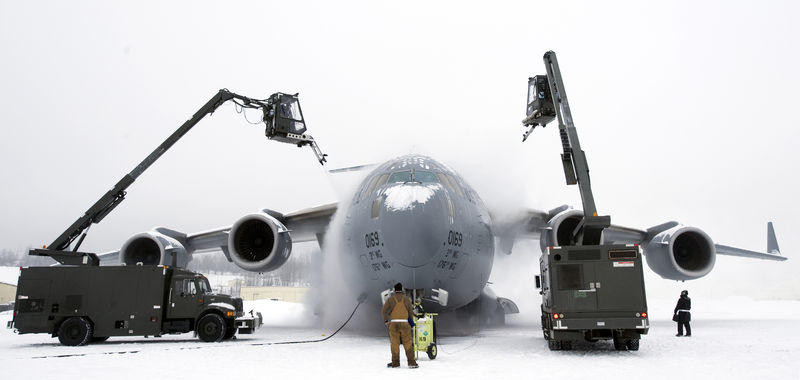U.S. Air Force photo by Master Sgt. Keith Brown
ELMENDORF AIR FORCE BASE, Alaska – Members of the 703rd Aircraft Maintenance Squadron de-ice a C-17 Globemaster III from the 517th Airlift Squadron before a training mission. Heavy snow and weeks of sub-zero temperatures require extra effort from maintenance crews to keep the aircraft clear of ice and snow. The training mission included dropping Army Airborne Soldiers from Fort Richardson, Alaska, and conducting air drops of training bundles that simulate the Soldier’s equipment. (from AIR FORCE LINK)
DEW
Dew does not actually fall; rather the moisture condenses from air that is in direct contact with the cool surface. During clear, still nights, vegetation often cools by radiation to a temperature at or below the dew point of the adjacent air. Moisture then collects on the leaves just as it does on a pitcher of ice water in a warm room. Heavy dew is often observed on grass and plants when there is none on the pavements or on large, solid objects. These objects absorb so much heat during the day or give up heat so slowly, they may not cool below the dew point of the surrounding air during the night. Another type of dew is white dew. White dew is a deposit of white, frozen dew drops. It first forms as liquid dew, then freezes.
FROST
Frost, or hoarfrost, is formed by the process of sublimation. It is a deposit of ice having a crystalline appearance and generally assumes the form of scales, needles, feathers, or fans. Hoarfrost is the solid equivalent of dew and should not be confused with white dew, which is dew frozen after it forms.
Source: www.tpub.com



